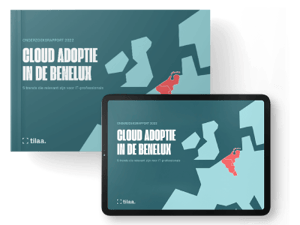
The new Tilaa Cloud Database configurations will make your life as a user much easier. This applies not only to creating a database configuration for PostgreSQL or MySQL environments, but also to maintaining it. Cloud databases can be a powerful tool, but they also come with their own unique challenges. In this article, we share a few of the best practices to give you a head start.
Best practice 1: Ensuring availability of your Cloud Database
When it comes to databases, stability, or "durability," is essential. The database must be available and functional whenever it's needed. This is particularly important for production systems that operate around the clock, as well as for test and staging environments where the availability of the database is critical.
The availability of your own environment
If you are running a database system in your own environment, you must ensure that the environment is available to users inside and outside the premises. The primary risk with database systems is their dependence on IT technology. As a result, you must consider how to deal with issues that may arise.
One solution is to implement redundancy of infrastructure or system parts, which involves putting identical functional parts in a design that can take over if the main part fails. This is similar to a backup structure, but with automation.
Database redundancy is more complex because the data changes over time. Therefore, in addition to bringing the database system online, the data on the new node must also be synchronized. In multi-node database environments, there is always one database acting as the master, directing the actions (read/write/sync) towards the master node and its worker nodes. If the database engine fails, clustered database environments require an arbitrary process to determine whether or not the master is still capable of performing the job. While single-node database systems do not have these issues, they come with other operational risks such as downtime, data loss, or data corruption.
Software Updates
Database systems rely on the software they run, which is not always flawless. Nowadays, software is updated regularly, sometimes as frequently as every hour. To get the new functionality of a new software release onto the production system, extensive testing must be conducted. After this phase, the new version, which has been thoroughly tested and deemed stable enough for production, can be migrated to the database engine on the node. Using more than one node enables the use of a blue-green deployment within the cluster, making it possible to update the database engine software on one of the nodes used for replication. The new version can then be put to use through a changeover of the master role within the cluster, ensuring that the switch to the updated software is done without downtime. It is advisable to test the updated software with a small number of clients before making the switch.
In summary, the aim of these practices is to ensure that your database environment, as well as the data, is available when you need it, whether for short periods of time or around the clock in a full production environment.
Best practice 2: Simplifying the IT system setup process
Setting up an IT system can be a complicated task. To do it yourself, you need to arrange the hardware, configure the networking, servers and services, install the necessary software, and set up an admin user account. Keeping track of updates and patches can also take up a lot of time.
However, with Tilaa Cloud Database, the process is much simpler. You only need to make four decisions:
- How much redundancy do I want (single, double, triple)?
- What is the required sizing of the database nodes?
- Do I want my database to be publicly accessible or restricted to a private network?
- What will be the admin user password?
After you place your order, your cloud database environment will be set up quickly, and you will be able to enjoy the ease of use of the Tilaa-managed database environment. The installation will save you time and money, and you will not have to deal with the complexities of setting up your own IT system.
Best practice 3: Upgrade and resize your cloud database
Setting up a Cloud Database environment can be challenging because it's important to allocate the right number of resources.
A standard rule can help determine the memory size needed for the database nodes, based on the amount of data stored. This helps achieve an optimal ratio between database size and memory, which impacts performance.
To help determine other parameters for node configuration, the graph below can be used.

This graph shows the optimal memory size of the node based on the amount of data in the database. Tilaa cloud database nodes come in different sizes, such as 4, 8, 16, 32, or 64 GB, for production purposes.
The memory size of a node is associated with the number of cores it has. For example, if the database size is 300GB, the baseline configuration according to the graph will be a node with 32GB of RAM. Using the Cloud Database product page, you can find the right combination of storage and RAM size for your needs. You can also choose the level of redundancy needed, depending on the use of the database.
It's possible to change the database characteristics after launch, so if the system is not living up to expectations, it could be due to a lack of resources. During the lifetime of your database configuration, you can always change the sizing, so it doesn't have to be exactly right on the first attempt.
When starting with cloud database, it's best to start small and change the configuration gradually. For testing or development phases, redundancy may not be necessary, so a single node option can be used. There is no difference in database functionality between the options, so they work the same. Once you move to a staging or production phase, you can consider the options again and change the database configuration accordingly.
Empower your business with our cloud services
Today, it is more important than ever to make rapid digital steps while remaining flexible and scalable. At Tilaa we are convinced that the cloud was created to make everything easier. Tilaa makes the cloud the way it was meant to be.
If you want to experience the benefits of our Cloud Database configurations for yourself, don't hesitate to contact us. Let us help you build a rock-solid foundation for tomorrow's success.

